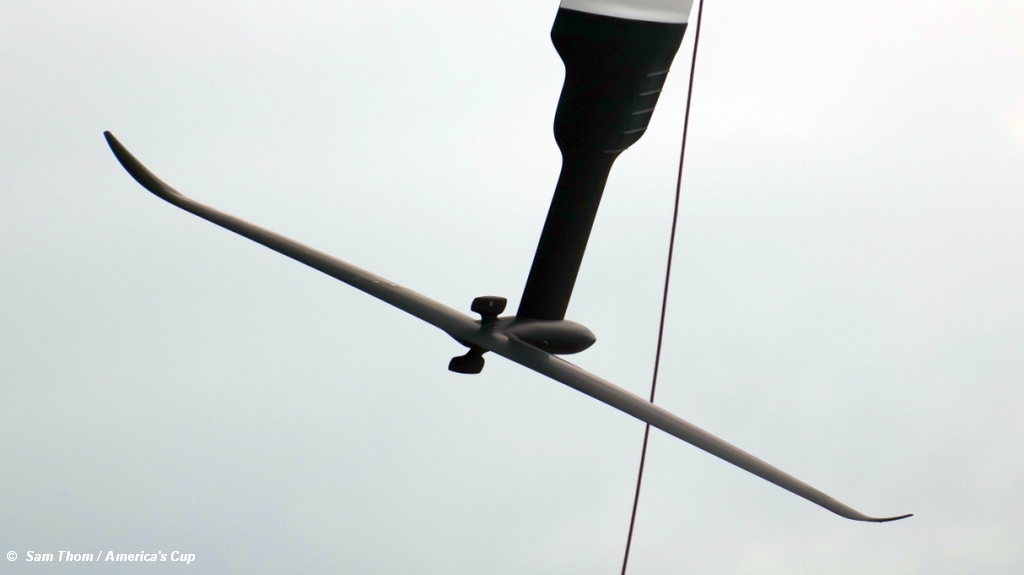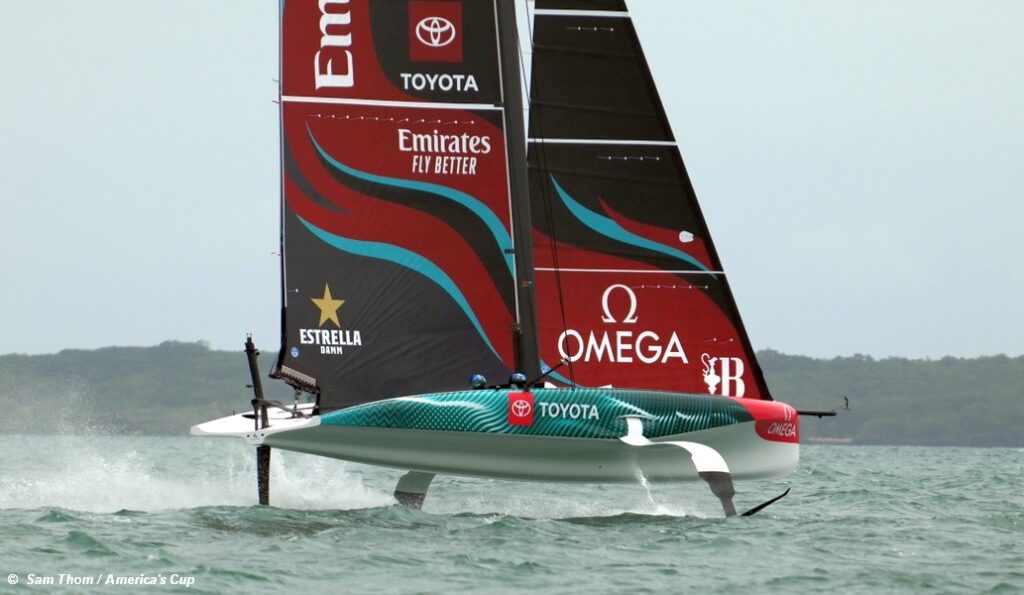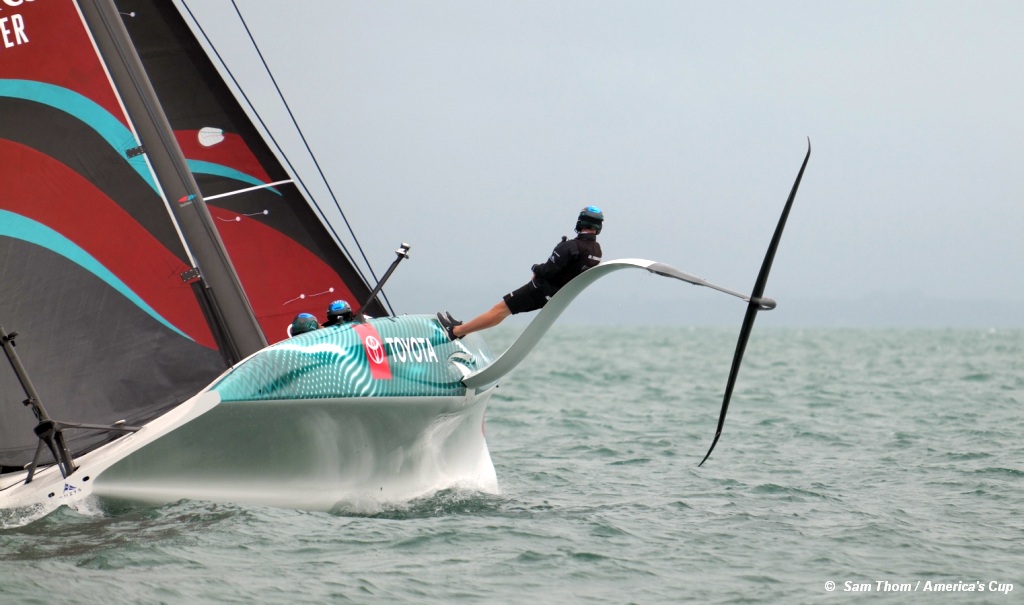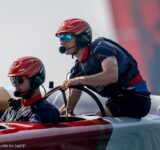In seven months, America’s Cup racing will begin for real in Barcelona – with the start of racing for the new AC75 boats in the Preliminary Regatta on 22 August.
For all the teams there is a mountain of milestones to achieve before then with the first new AC75 designs expected to be rolled-out in April.
For the Cup Defender Emirates Team New Zealand it has been all systems go with the team back out on Auckland’s Hauraki Gulf this week sailing their LEQ12 test and development AC40, putting their latest foil iteration through its paces and testing processes.
“There are many critical phases of an America’s Cup campaign, but this is certainly right up there.” explained Emirates Team New Zealand COO Kevin Shoebridge. “The windows are closing on the final design decisions, the timelines for production are tightening, and every week on our schedule between now and the start of racing with the Preliminary Regatta on August 22nd really needs to stay on track.”

The Kiwis were out in a solid breeze that peaked up at 20 knots+. Sea state was lumpy so this was upper-range conditions and a real test for the new Wing04 on the starboard foil arm and an even sterner test for the Flight Controllers/Trimmers charged with dealing with an asymmetric set-up from port to starboard.
What was noticeable with the new foil is the level of comfort that the team built in over the course of a dynamic, full pressure, high intensity session as Pete Burling and Nathan Outteridge began driving the boat like they stole it. Fast bear-aways, even faster round-ups, the data analysts would have been whooping with the numbers coming back.
Downwind, especially going from starboard gybe onto port, the new foil looked to have a lower exit and Nathan appeared to be wanting to push it lower and lower. Upwind, the cant angle was simply enormous, almost out at 45 degrees to give a super low-ride and bring the hull desperately close to the surface but still with the ability to trim up on the ride height over the waves.
Sail trim was, as usual, bang on point with the current trend of only using minor traveller adjustment (although constant) and keeping more pressure on the leech through mainsheet adjustment. Downwind this is accentuated with a floppy forestay but observable leech flicks via the mainsheet to keep the power on. Massively impressive sailing from the Defenders of the 37th America’s Cup over the two-and-a-half-hour session that was mesmerising to watch.
Speaking afterwards, Performance Engineer in the Aero and Hydro Division, Simon Corkery gave a good analysis of the day and what the team were looking to achieve saying:
“Well it’s obviously a brand-new foil on the boat. There’s been a few minor issues that we’ve had with it over the past couple of days which you know caused us to come in earlier the other day, so today it was really about just pushing the foil to the limit seeing that it’s going to hold out for the entire range of conditions that we could expect the thing to suffer through.”
And today was a pretty good day because it basically survived, and we came back when we intended to . . . It’s working well but that’s one of the challenges of our job. All the conditions are super nice and perfect on the computer but when you come out and actually sail and then you’re ploughing through waves getting data which is actually representative of what you have on the screen it’s extremely challenging, so we do our best and so far that foil seems to be doing a pretty good job.”

And looking forward to the upcoming decisions that will have to be made on the foils, Simon gave a very interesting insight into the process that all the teams will be facing now, saying:
“That’s always a hard one to say so I mean our sailors and a lot of the other teams will be trying to weigh up how big the foils need to be and things like the planform shape that they may have and then often the choice comes down to I guess personal preference in terms of what the teams actually targeting – the bigger foils perform better in the light and they help to take off, but then they generally have a whole lot more drag when you’re going in the upper wind range so it’s a challenging time of year for all the designers, sort of crunch time now.”
It is these vital evaluations of the team’s last test foil allowed by the Protocol of the 37th America’s Cup, that will decide the ultimate shape and intricate characteristics of Boat 3’s race foils.
So it is a busy time inside the teams base tucked away in Auckland’s Wynyard Point as well as the committed team of boat builders working tirelessly at the ETNZ production facility in Albany.
Helmsman Nathan Outteridge is well aware of the stage of the campaign . . .
“We’re getting to the busy end of the campaign now. Final test foil, final year of the campaign. There is only nine months to go and it will all be over, but right now there are a lot of things to tick off here in Auckland before we head off to Barcelona.”







